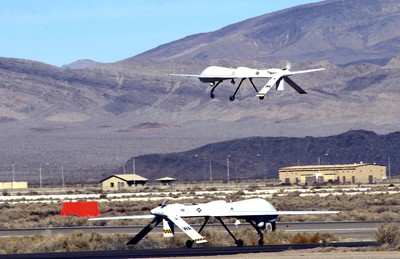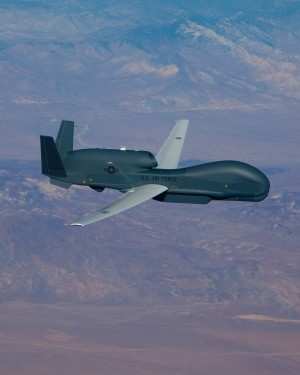But New Companies Are Finding It A Difficult Place To Get A
Toehold
 Defense companies that wish to
claim a stake in the intensely competitive unmanned aircraft system
(UAS) market will find the task challenging, according to a new
report by industry analyst Frost & Sullivan. Mature
technologies, coupled with increasing consolidation, are making the
UAS market a difficult space to enter. These challenges are not
likely to hold back the market, especially with the Department of
Defense's (DoD's) demand for UAS at an all-time high due to the
ongoing war operations in Iraq and Afghanistan.
Defense companies that wish to
claim a stake in the intensely competitive unmanned aircraft system
(UAS) market will find the task challenging, according to a new
report by industry analyst Frost & Sullivan. Mature
technologies, coupled with increasing consolidation, are making the
UAS market a difficult space to enter. These challenges are not
likely to hold back the market, especially with the Department of
Defense's (DoD's) demand for UAS at an all-time high due to the
ongoing war operations in Iraq and Afghanistan.
Although the troop withdrawal in Iraq and lower defense budgets
could have a long-term negative impact on the UAS market space, the
market is expected to increase between 2009 and 2013.
According to the report "U.S. Unmanned Aircraft Systems Market",
the market earned revenues of $3.16 billion in 2008 and estimates
this to reach $3.81 billion in 2013.

Predator UAV
"By focusing on UAS subsystems, the
U.S. defense industry will still be able to take advantage of a
market space that is rapidly changing both technologically and
competitively," says Frost & Sullivan Industry Analyst Lindsay
Voss. "Six years after the onset of rapid UAS procurement, the U.S.
DoD is still demanding more persistent intelligence, surveillance,
and reconnaissance (ISR) assets in the air. This ensures growth in
the UAS space while many other areas of aerospace and defense are
contracting."
Apart from the benefits of lower costs of purchase and
operation, unmanned aircraft eliminate the need for an onboard
crew, making it easier for the military to tackle more advanced
missions. Warfighters are demanding more full-motion video and
since unmanned aircraft are the foundation for this vital resource,
they are emerging as critical assets in the battlefield.
"From nano and small systems weighing less than 2 pounds to the
10,000 pound Global Hawk, UAS is changing the dynamics of the
military aviation market space," notes Voss. "Companies that have
traditionally provided manned assets to their military customers
can no longer ignore the trend, and many are embracing unmanned
aviation."

Global Hawk UAS
The overwhelming demand for constant ISR from warfighters has
kicked the UAS market into overdrive, stimulating dramatic growth
for key UAS companies. But new participants are not likely to find
the going as easy as the entrenched competitors. Companies that
could provide an 80 percent UAS solution ten years ago dominate the
market today across all key platform categories. Market domination
by well-established companies has already driven some participants
out of the market and forced others to diversify their product
and/or service offerings.
"Diversification is proving to be an important strategy as new
market participants seek to be profitable in the UAS space,"
observes Voss. "Companies that are able to offer value to their
military customers through current product offerings while
expanding into key UAS market sub-segments are improving their
competitive positions."

Hunter UAS
Frost & Sullivan says the emergence of vital growth
sub-segments such as UAS services and subsystems are creating
numerous opportunities for participants, especially with UAS
continuing to proliferate in the battle space. Companies will have
to make the most of the opportunities in these diversified areas if
they wish to solidify their positions in the market.
 ANN's Daily Aero-Linx (05.02.24)
ANN's Daily Aero-Linx (05.02.24) ANN's Daily Aero-Term (05.02.24): Touchdown Zone Lighting
ANN's Daily Aero-Term (05.02.24): Touchdown Zone Lighting Aero-News: Quote of the Day (05.02.24)
Aero-News: Quote of the Day (05.02.24) ANN FAQ: Contributing To Aero-TV
ANN FAQ: Contributing To Aero-TV NTSB Final Report: Cirrus Design Corp SR20
NTSB Final Report: Cirrus Design Corp SR20






